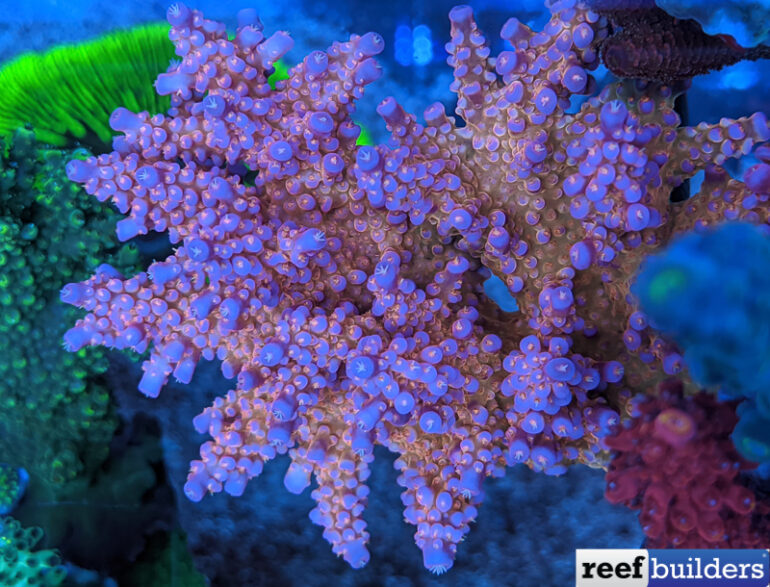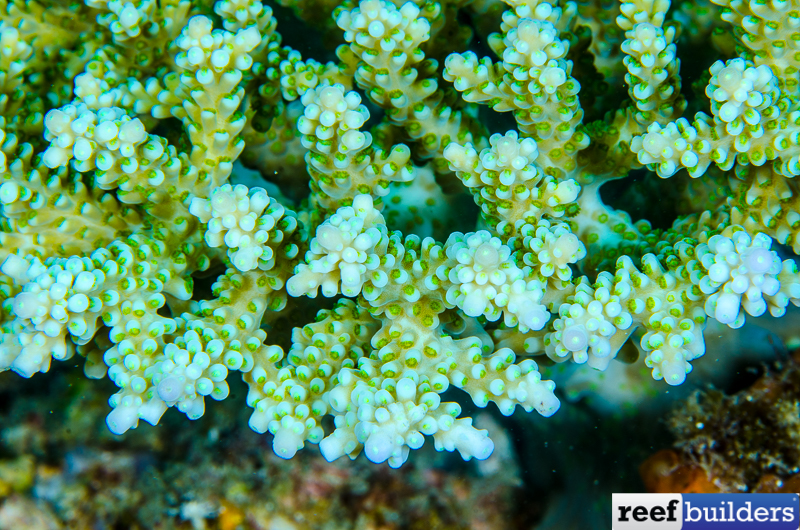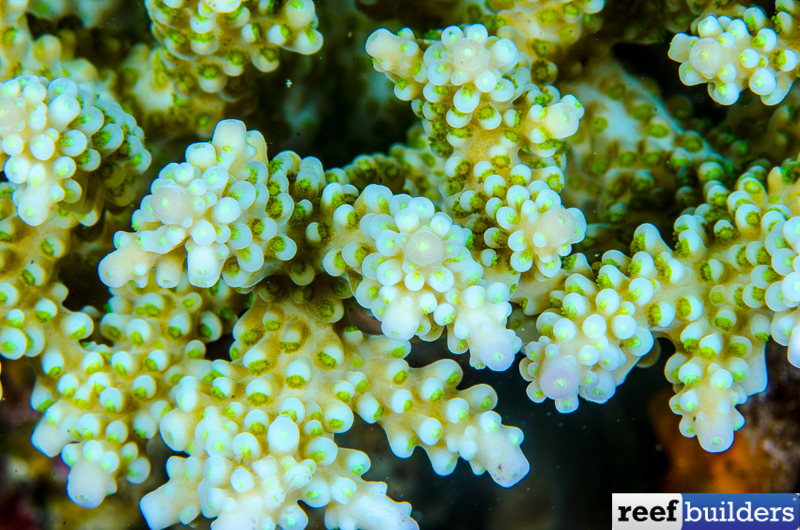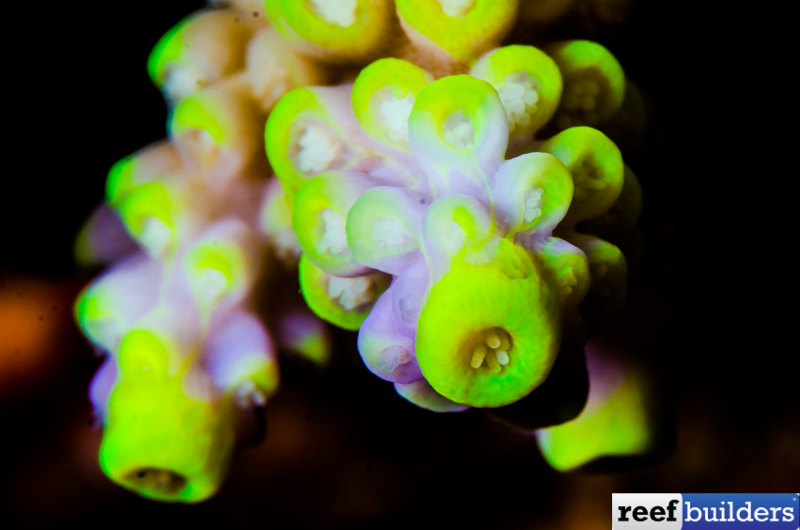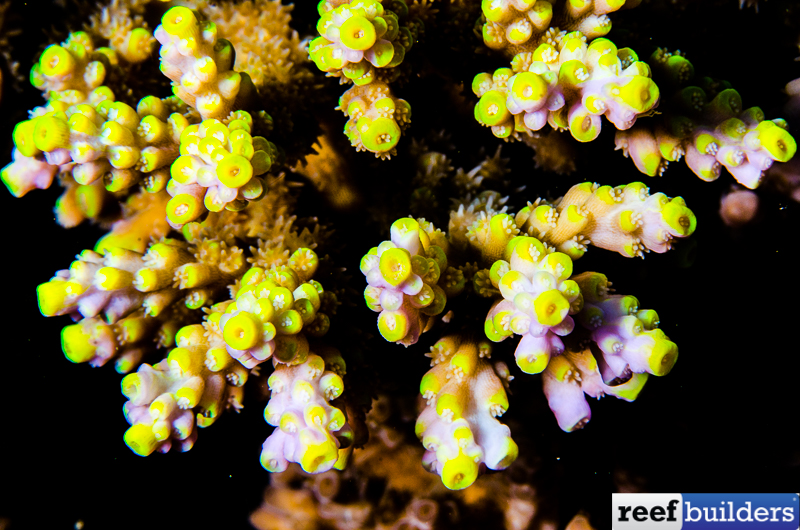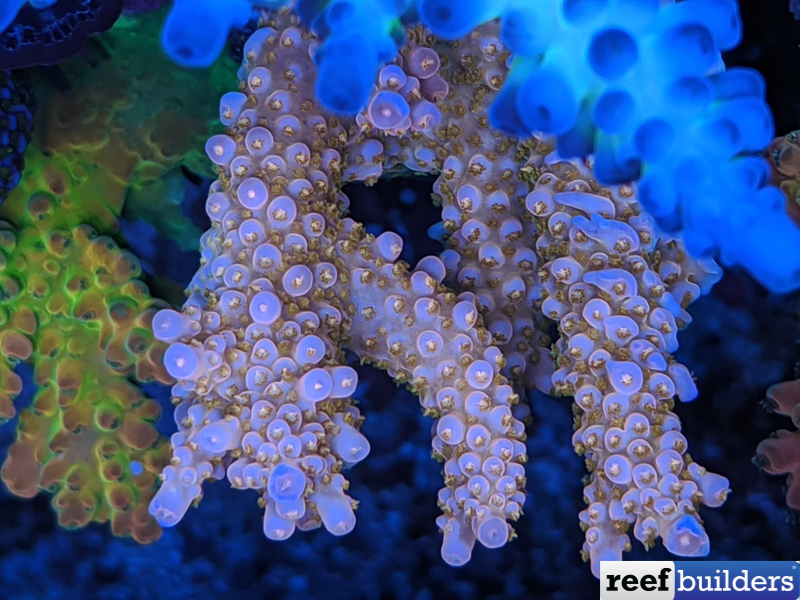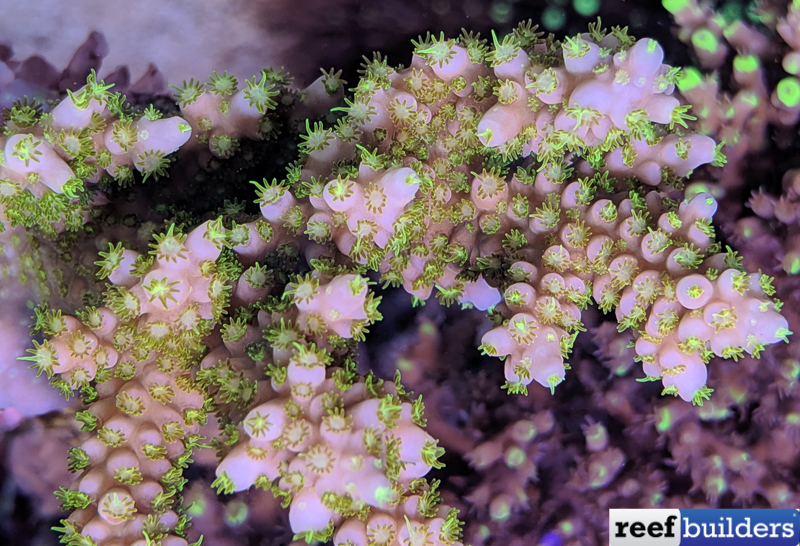Ever since the coralsoftheworld.org website was updated, we spent a lot of time reviewing it and found out that few of the updated or added species made a lot of sense. There was a species that we came along all the time on the great barrier reef, but could never ever really figure out what species it was. This pillow shaped Acropora species is really popular and available under so many different names in the fragging world such as the most popular ‘Merlins Staff’ or ‘Firework’ Acro.
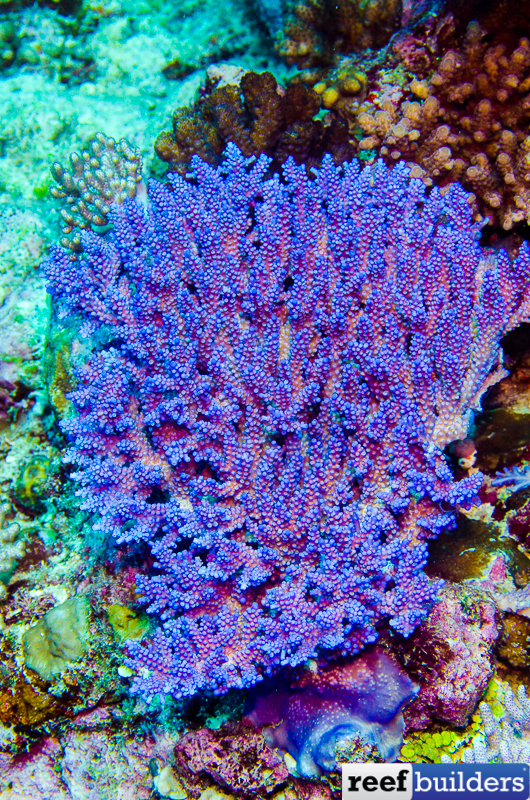
Classic colony shape on outer reefs of the GBR. 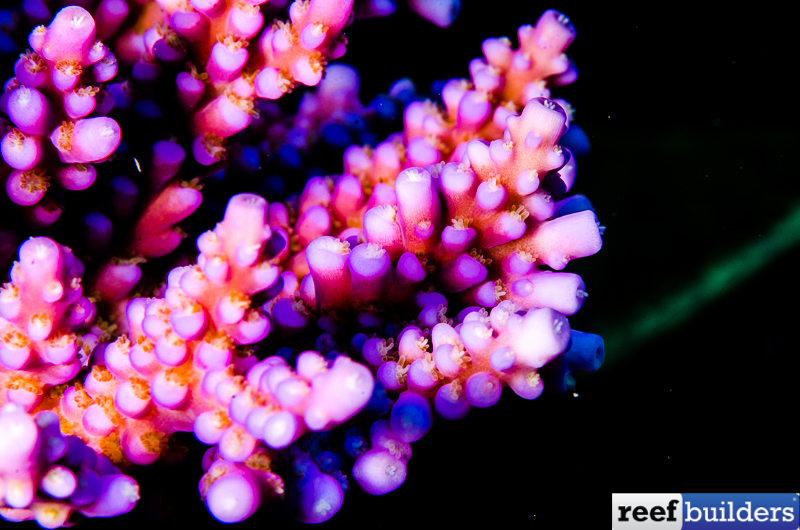
The curved branches at the edge of the colony
Once we came along the new species fact sheet of Acropora donei it then became crystal clear that a common strain of corals largely fragged and sold all over the country was this species.
Description:
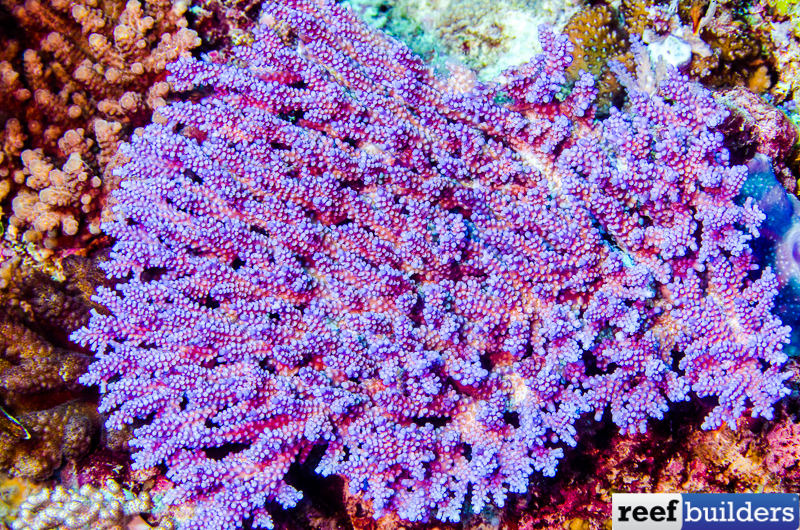
Acropora donei can grow into tables over 2 meters wide, but seldom see them this large. One of the particularities is that it forms a kind of plate consisting of a mass of fused horizontal branches. Peripheral branches are mostly horizontal; those towards the colony centre have upturned ends. All branches have blunt ends and are neatly arranged and radial corallites are usually in two sizes, the larger of which has flaring lips. The nariform shape of Radial corallites with this thick flaring lip is characteristic of Acropora donei.
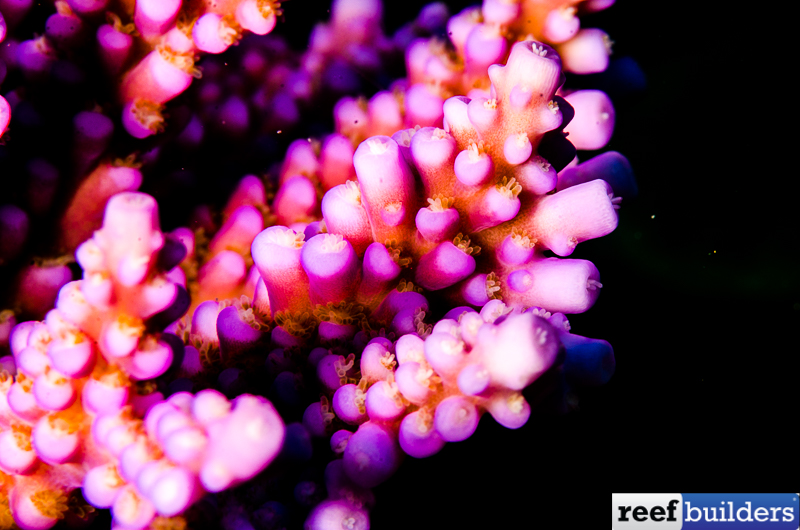
Habitat:
On the GBR, together with the Ultra Coral Australia team, we found Acropora donei in the same environment as the Strawberry Shortcake Acro, A. microclados. The habitat is usually outer reefs that are bathed with clear, high quality water, huge swells and currents.
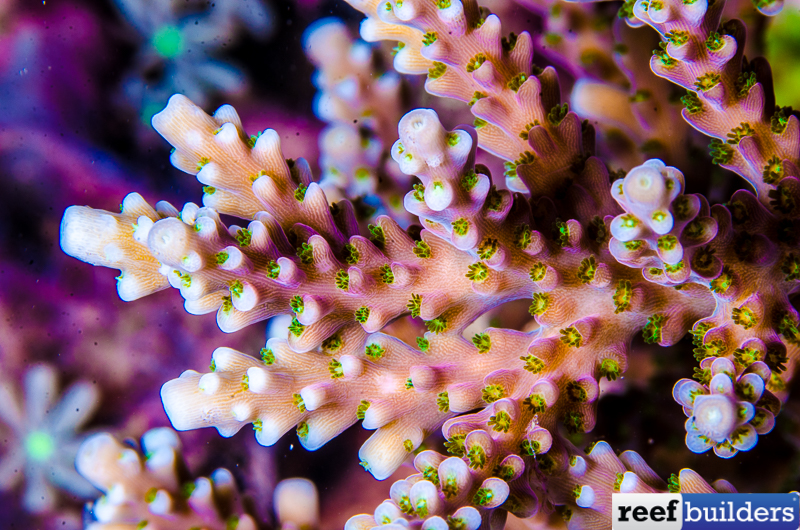
In Indonesia, Acropora donei prefers passes with high flow, but also with high quality water.
Maintenance:
Due to its habitat, it is no secret that Acropora donei has the highest possible standards when it comes to lighting, flow and Water Quality. This cleat high energy reef species should be maintained only on the best possible conditions otherwise it will quickly lose its coloration, and fade to death pretty quickly. It should be positioned on top of your reef, where lighting and flow are the highest.
Coloration:
This particular species comes in a wide range of coloration, and a lot of different strains are available all around the world now.
The most common form of Acropora donei is bright purple with pink polyps, but pink, yellow, blue with bright green polyps are also possible. Now that we can put a name on an already popular species, hopefully Acropora donei will become even more available and recognized, as it’s really a stunner, that do very well in reef tanks, a perfect Aquarium Acro.


